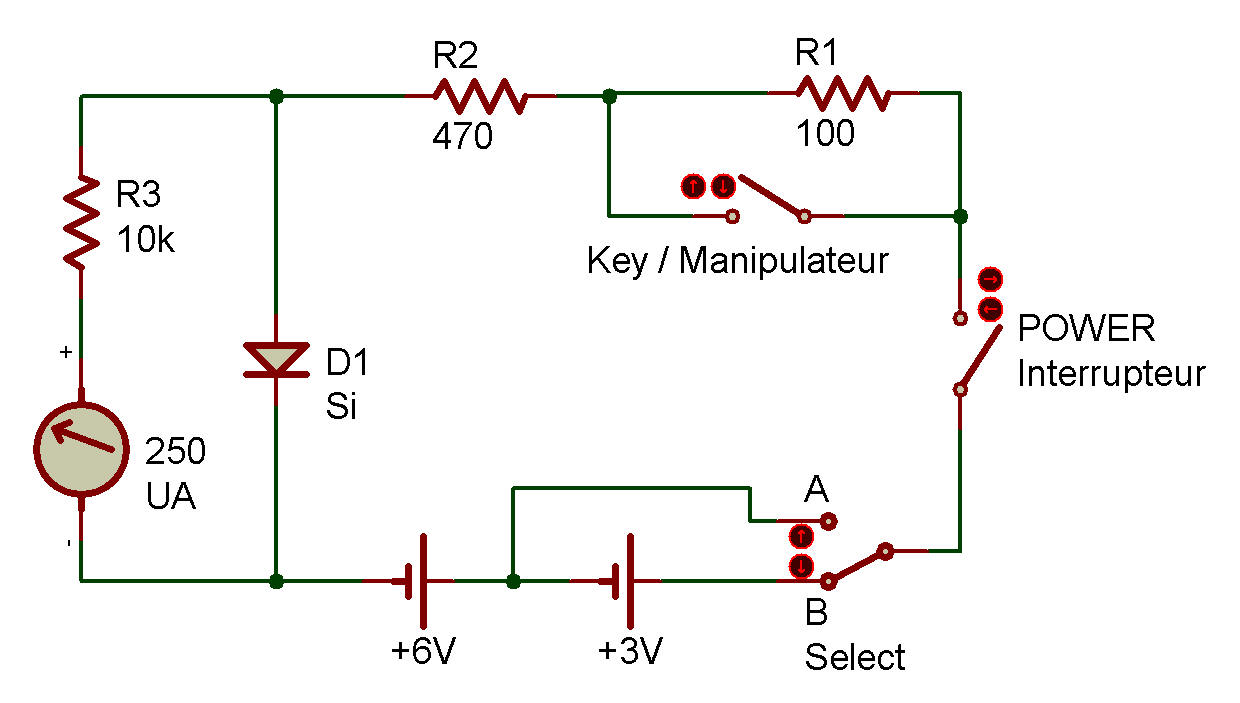
Voltage Regulator

One of the nicest things about a diode is that its voltage drop is fairly constant regardless of how much voltage is applied to it, This makes it ideal for situations where we need to supply part of a circuit with a constant voltage. This Project will show how well a diode does this job. Take a good look at the schematic for this Project.
With the Select Switch at A? The circuit gets 6 volts from the Batteries. When the Select Switch is set to B, 9 volts is supplied from the Batteries. We would expect that the Meter pointer would move further to the right at 9 volts than ii does at 6 volts. Let's see how correct we would be in assuming this . . . .
After building this circuit, set the Select Switch to B and turn the power ON. Notice where the Meter pointer swings to.
Now press the Key. This takes the 100 ohm resistor "out" of the circuit (see schematic). We might expect the Meter pointer to move more to the right ... but nothing much happens. If the Meter pointer moves at all, it will be only a slight movement.
Now set the Select Switch to A, The Batteries are now supplying only 6 volts to the circuit. What happens to the Meter pointer?
It may drop, but only very slightly. Try pressing the Key. Again the difference in the position of the Meter pointer will be very slight - if you can notice the difference at all.
All this happens because the Meter is being supplied electricity through the voltage drop of the diode. And this drop holds fairly constant regardless of the voltage from the Batteries, Of course, voltage regulator circuits are usually more complicated than this one.
A special type of diode, the Zener diode, has been developed for use in voltage regulators.
